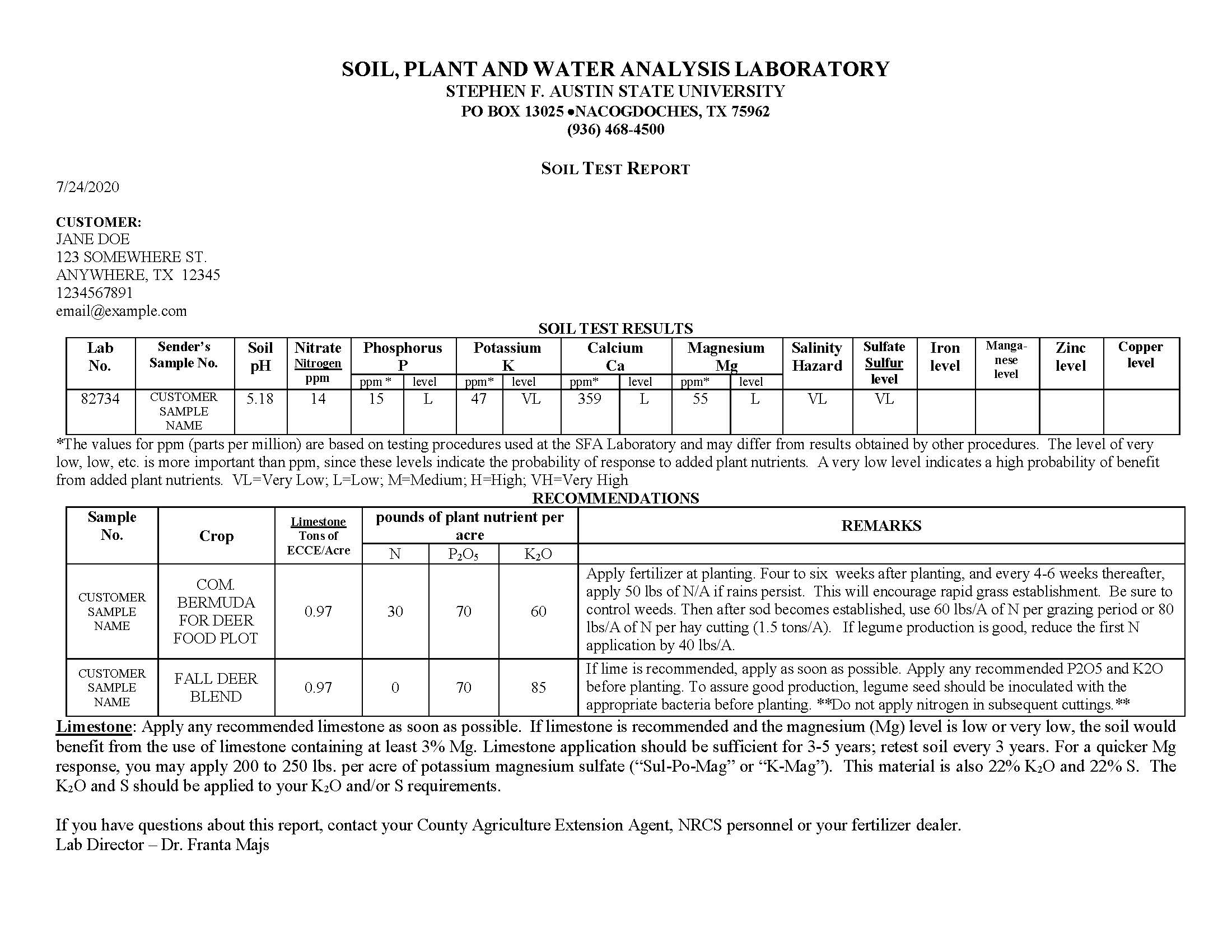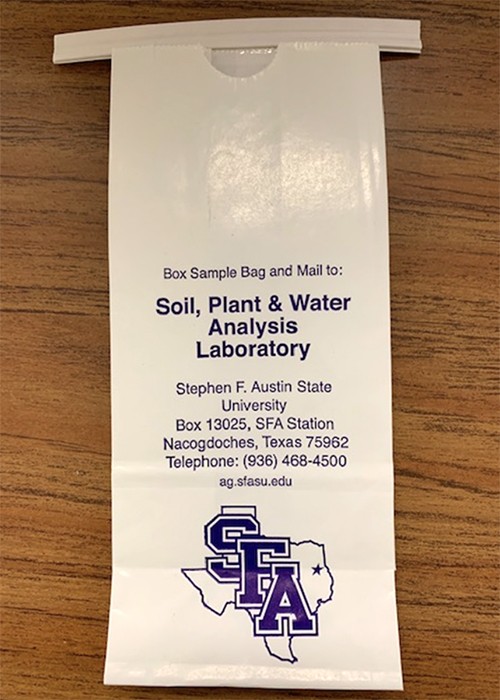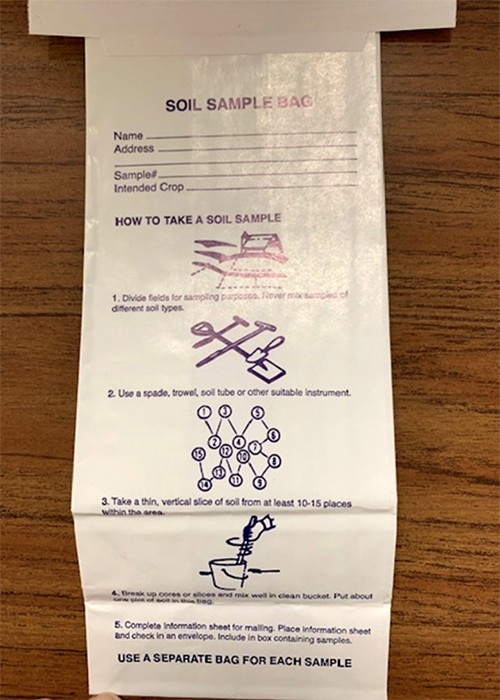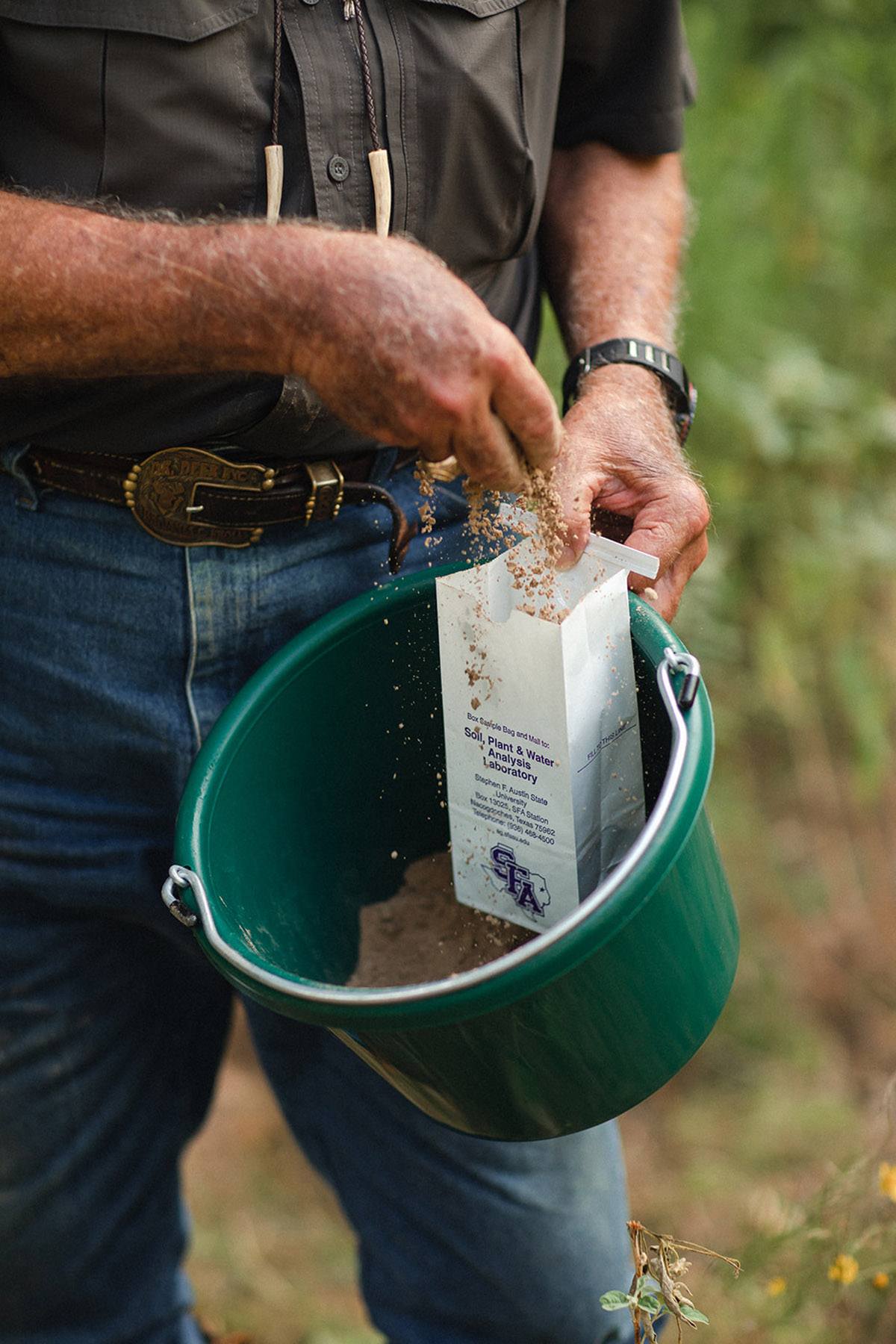A successful wildlife program on your land starts with determining the quality of your soils and how they can support or hinder plant development; yet, most landowners refuse to go to the trouble! Soil sampling is easy and having these samples analyzed is relatively inexpensive, costing no more than $25 for a complete analysis. But, how do you collect the samples, what do you do with them, and who do you send them to? Let’s take these one at a time.
The idea is to obtain a scientifically accurate assessment of the fertility of your property so that you can plan a fertilization process for your feed orchard. However, a single property is made up of perhaps dozens of soil types, some of which are suitable for planting food plots or establishing deer orchards. So, we start with an assessment of your property. It is a tried and true fact that the tops of hills are not a good place to plant things other than forest trees or plains grasses. As you move from the top of a hill, down the slope and into the bottom, the finer soil particles tend to increase, along with fertility. YET, as you get to the lower topographic areas, they may be frequently inundated, and actually are not well-suited for planting crops. Somewhere along the mid-slopes you may find places suited for planting, but slope has to be relatively flat. Often, as you go down a hill, you encounter terraces that are perfect for planting. Of course, many properties do not have radically steep topography, making more places suitable for crops.

As you will read in subsequent articles, you should plant about 3% of your land to food plots, and have at least one deer orchard per 80 acres. If you do not have that much land, one deer orchard will do, and you can plant food plots amounting to about 2.5 acres. We like to break this acreage up into two or three plots. You should locate your plots in areas with the following traits:
- Topography that lends itself to cultivation.
- Areas that already are cleared, reducing cost.
- The best soils on the property.
- Areas easy to get to with equipment such as a tractor.
Once you locate areas suitable for plots, the next step is to collect soil samples from each plot. Since most plant activity occurs within a few inches of the surface, the idea is to collect your soil samples from this region. Taking a hoe or sharpshooter, carefully scrape away the top layer of plants and organic matter. Next, dig down about 10 in. and bring up a shovel of soil. You should also carry a small bucket and dump this material into it. Then using your clean hands, thoroughly mix the soil to give a uniform sample. Then place a subsample into the bag provided by the soils laboratory (see photograph), or a simple small lunch bag. Carefully label the bag with the name or location of the food plot.
What do you do if you have decided o plant a large area such as an acre. The first thing to do is try to determine if there are significant differences in the soils within the plot. A few exploratory digs can tell you this. If the plot contains significantly different soils, you will have to develop a composite sample for the entire plot. Just use a random pattern of soil samples, each time combining them in the bucket. Then thoroughly mix the material and bag it as given above. How many separate samples? Depending on the complexity of the soils, I generally try to collect 10 samples per acre, then mix them. It makes no sense economically or practically to order soil analyses on each sample without pooling!
Prior to collecting soil samples, contact a soils laboratory to determine their preferred procedures and costs. Sometimes they will send you their special soil bags. Here is a link to a listing of all state soil laboratories in the US. These are state university operated labs, and there also are many private labs around the country. Some of the private labs are attached to businesses such as fertilizer distributors, who may conduct the analysis free if you buy your fertilizers and lime from them. Cooperatives also provide these services.
It does not take a great deal of time to collect soil samples and have them analyzed, yet this is the number one failure of landowners for some reason. Do it right, and you will be a lot happier with your management program. Understanding the report you get back however, can still be a challenge.




